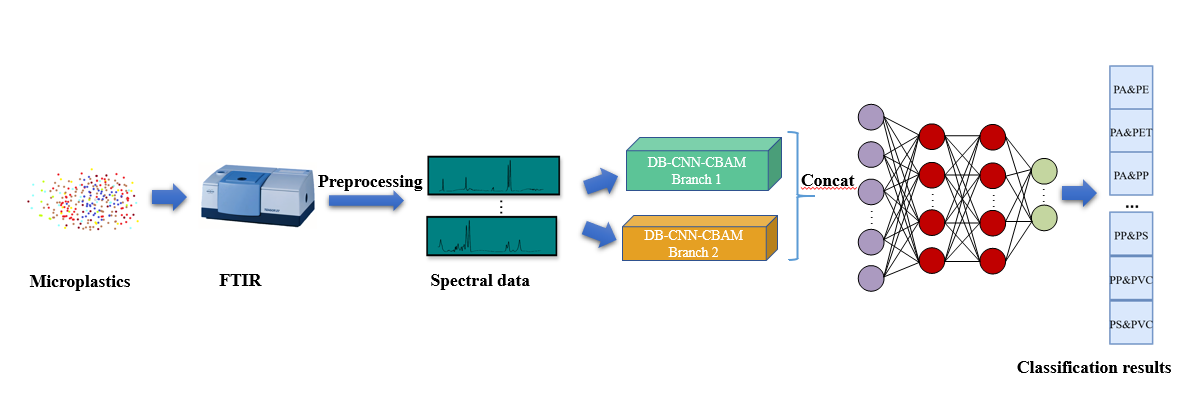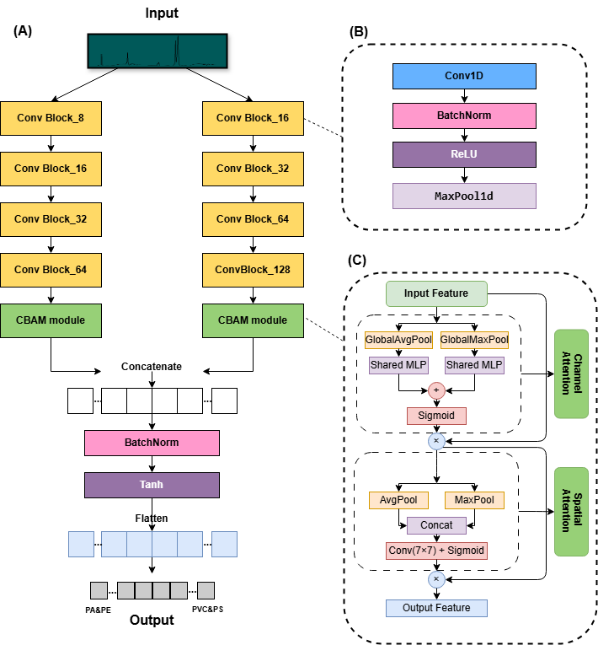
Recently, a research team from the Hefei Institutes of Physical Science of the Chinese Academy of Sciences, has developed a new deep learning method that improves the classification accuracy of mixed microplastics in infrared spectroscopy to 98%.
Their findings were recently published in Microchemical Journal.
Microplastics are plastic fragments smaller than 5 mm with different shapes. They are one of the four major emerging pollutants gaining global attention. Because of their tiny size, microplastics are more harmful than larger plastics. In practice, they often appear in mixtures, and the mixing ratios change spectral signals, making them difficult to analyze. Traditional machine learning methods capture only limited spectral features, which reduces the accuracy of microplastic identification.
In this study, researchers apply the highly efficient attention mechanism (CBAM) to a two-branch convolutional neural network. The two branches concatenate the outputs of the CBAM attention module to extract more spectral features, thereby optimizing the model's classification performance and achieving a classification accuracy of up to 98%, outperforming traditional algorithms.
The CBAM module first uses a channel attention module to identify key channels. It then utilizes a spatial attention module to locate important spatial regions within each channel. Finally, it generates an attention map and multiplies it element-wise with the input feature map to refine the features.
“Visualizing convolutional neural networks through Grad-CAM more clearly shows the important features selected by the model in characterizing microplastics,” said TONG Jingjing, a member of the team.
The research was funded by the National Key Research and Development Project of China, the National Natural Science Foundation of China and other projects.

Hybrid microplastic recognition method combining attention mechanism and dual-branch convolutional neural network (Image by TONG Jingjing)

Dual-branch CBAM convolutional neural network structure (Image by TONG Jingjing)